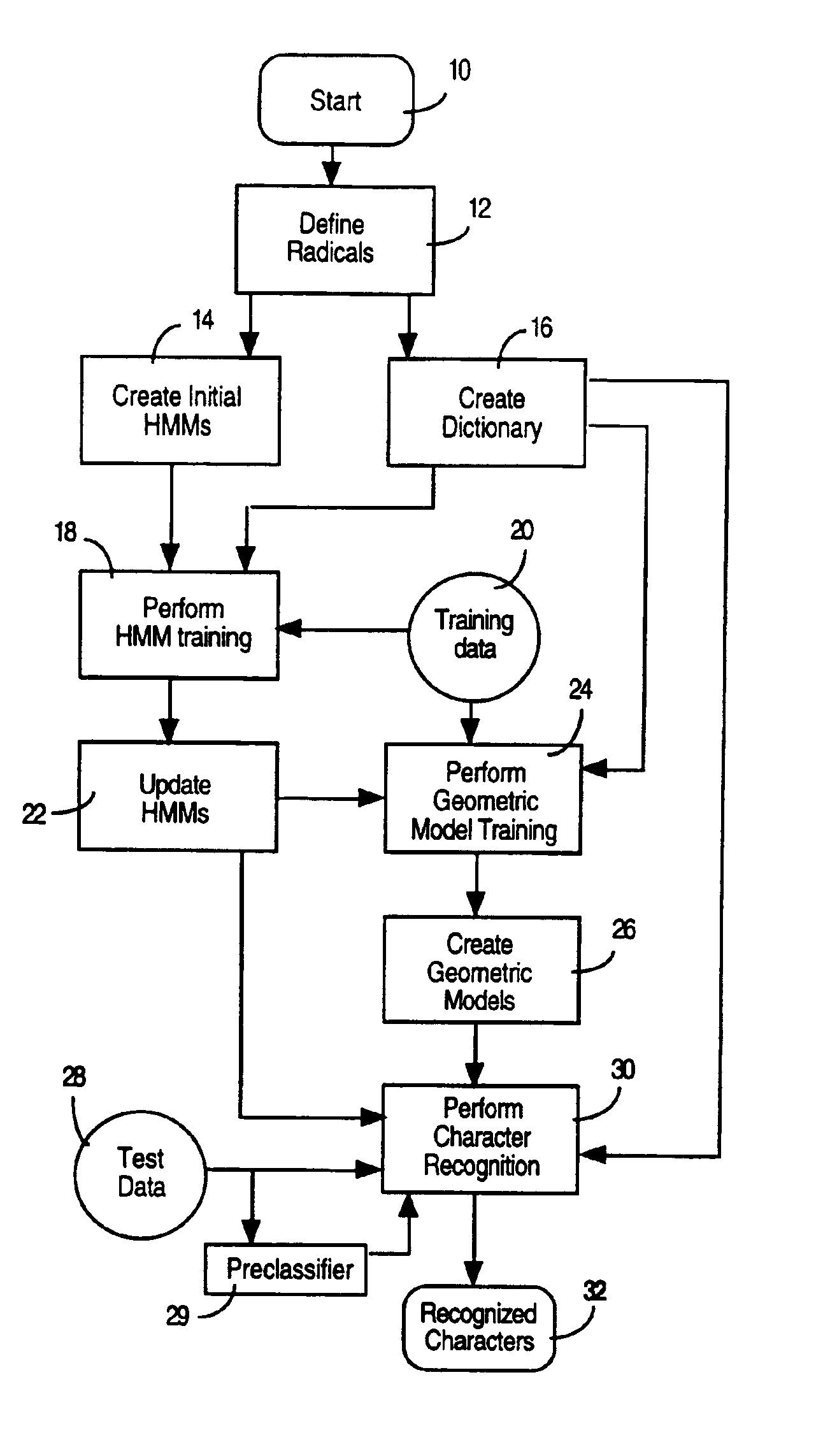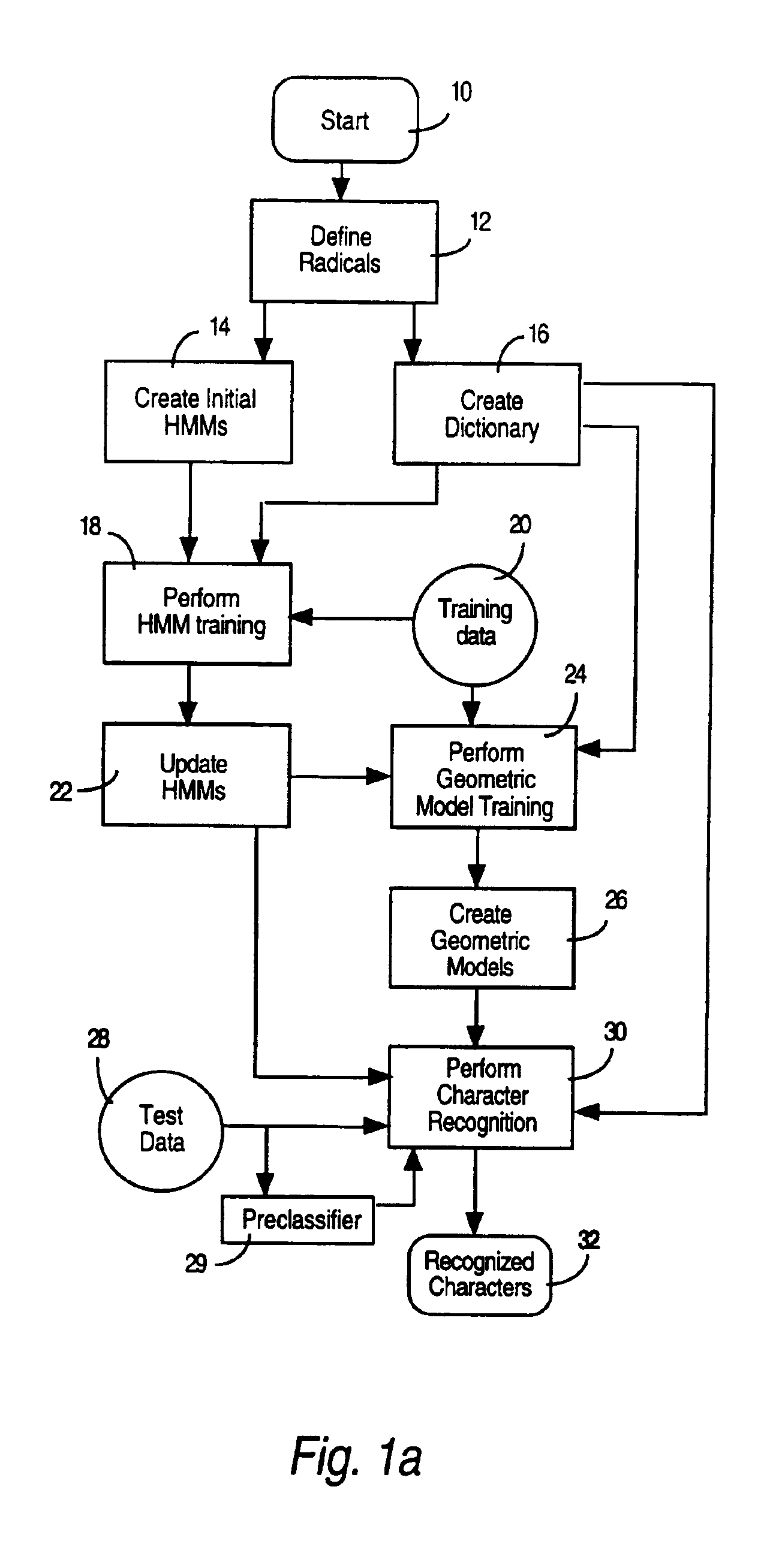Methods and apparatuses for handwriting recognition
a handwriting recognition and handwriting technology, applied in the field of handwriting recognition systems and methods for handwriting recognition, can solve the problems of not being able to adapt to on-line cursive style handwriting character recognition by prior methods, cumbersome and slow entry by a typical computer keyboard of a character into a computer system, and affecting so as to improve the accuracy of hmm techniques and increase the storage requirements of databases.
- Summary
- Abstract
- Description
- Claims
- Application Information
AI Technical Summary
Benefits of technology
Problems solved by technology
Method used
Image
Examples
Embodiment Construction
[0041]FIG. 1A provides an overview of the present invention and its various related parts. These parts include a design procedure for creating the subcharacter models; a method that uses the subcharacter models to find the most likely sequences of subcharacters in a handwritten character; a method that uses a two-dimensional geometric layout of the subcharacter in a character to find the most likely subcharacter layout; and finally the combination of the results from the recognition of sequences of subcharacters and the recognition of the layout of the subcharacters in order to achieve character recognition. Also, as shown in FIG. 1A, the results of a conventional preclassifier are used in combination with the radical sequence recognition and the geometric layout recognition in order to achieve better accuracy and speed of recognition of handwritten characters.
[0042]The overall method shown in FIG. 1A begins with the definition of radicals in step 12. This step is further described ...
PUM
 Login to View More
Login to View More Abstract
Description
Claims
Application Information
 Login to View More
Login to View More - R&D
- Intellectual Property
- Life Sciences
- Materials
- Tech Scout
- Unparalleled Data Quality
- Higher Quality Content
- 60% Fewer Hallucinations
Browse by: Latest US Patents, China's latest patents, Technical Efficacy Thesaurus, Application Domain, Technology Topic, Popular Technical Reports.
© 2025 PatSnap. All rights reserved.Legal|Privacy policy|Modern Slavery Act Transparency Statement|Sitemap|About US| Contact US: help@patsnap.com



